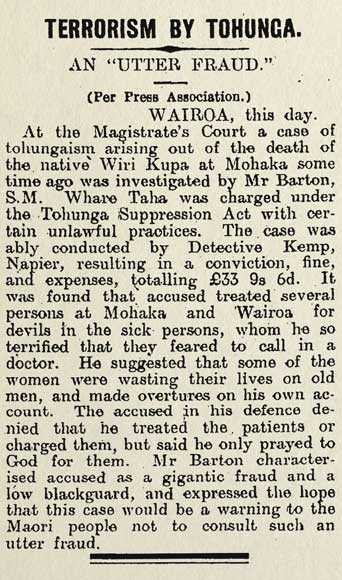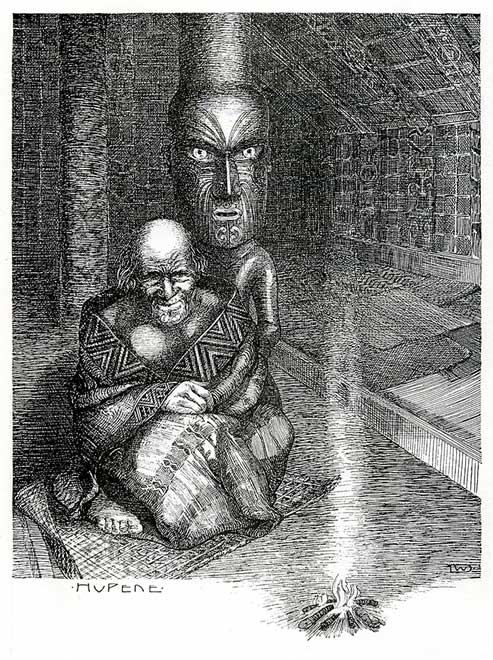Art History - week 9 - 8/04/2019
Culture appropriation
culture appropriation is taking another cutler's significant context or spirituality, changing it and altering it to ones own cutler and not caring about the cutler back ground of such thing. Also not saying were it is from and taking in consideration of history or laws behind the said cutler.
Moana, is it culture appropriation?
Tattoos, are they culture appropriation are they losing there original meaning?
This interview about Moana and the cutler appropriation is interesting because they do state about being aware of curtain things not being correct or interpretative wrong but they are glade they kept quite and still got our cutler out thee even if it is miss represented. I think this is interesting because I think they should have spoken up about this misrepresentation to make it more accurate and correct, though I do understand that if they did speak up they could have no longer been apart of the project which is something artist do deal with a lot. I do understand but, though there is a point when it comes to cutler misrepresentation when you should speak up.
This is a very interesting and great video about appropriation and racism. As a lot of cutler appropriation origins can come from racism, as it is talked about in this video a lot of things that belong to curtain cutlers have been appropriated due to racism was back when people were fighting for there lives and their rights as humans. the argument about fashion and large fashion labels appropriating cutler on the run way and using significant clothing items from a cutler as a fashion accessory with out taking consideration of the origins of the item. This is very valid because in cutler's some but not all items, weather is clothing or not has a lot of history and meaning behind it and have rules, appropriating an item that is significant to a cutler with out considering history, rules, and meaning is very rude and can be offensive to the said cutler.
Tattoo's are an interesting subject when it comes to culture, as each tattoo style has its own origin and tattooing itself has it's own origin in many different countries. Some cutlers have them to express their origins, who they are their family we're they are from, or were they stand in their cutler their importations or significance within their cutler. Other cutlers such as Japan it means social status, those with tattoos are gang affiliated, and or criminals. This I thought was interesting, as it is common for criminals to be tattooed and marked for their crimes, it was the fact that the beautiful tattoos were to state they were gang affiliated or criminals not to do with cutler identity it was to be easily identified. It is not common for those in gangs or were in gangs to have tattoos that represent their gang or criminal status. some cutlers use them as healing practices which is the most interesting, tattooing symbols onto ones body as a healing practice. this concept along is very interesting, as it is from the idea of symbols bring fortune to ones self or others, tattooing said symbols onto ones body is a step up from this and would be interesting to further look into and study on its own. tattoo's are a from of telling, stories or information with out having to state information to another person if they understand that tattoo. in some cutlers they are high respected if done in the correct manner of said culture, other cultures shun upon tattoos because of what they are affiliated with. Is tattooing culture appropriation? if someone of not origin culture is getting a tattoo from said culture in a disrespectful manner and not taking consideration the culture and origins then yes it is. Though what about contemporary tattoos? tattoo's that are not linked in with a culture and are inclusive to all? is it still culture appropriation because of the origins of tattooing?
The Tohunga Suppression Act 1907
The Act was repealed by the Maori Welfare Act, 1962
 |
| (Teara.govt.nz, 2019) Teara.govt.nz. (2019). Tohunga Suppression Act. [online] Available at: https://teara.govt.nz/en/document/28223/tohunga-suppression-act [Accessed 8 Apr. 2019]. |
COPYING
If someone copies another person's work and it is use for profit gain, and claiming it as your own it is plagiarism.
noun
mimesis
/mɪˈmiːsɪs,mʌɪˈmiːsɪs/
1.
FORMAL•TECHNICAL
imitative representation of the real world in art and literature.
"Barth has always detached his use of plot from mimesis“
Define and find illustrations for:
Tohunga
"Priests were known as tohunga. Māori scholar Te Rangi Hīroa (Peter Buck) suggested that the term derives from tohu, meaning to guide or direct. Ngāpuhi elder Māori Marsden suggested tohunga comes from an alternative meaning of tohu (sign or manifestation), so tohunga means chosen or appointed one.
The term tohunga is also used for an expert in a particular field. An expert in tattooing (tā moko) was a tohunga tā moko. An expert in carving (whakairo) was a tohunga whakairo. A priest was a tohunga ahurewa (sacred place tohunga)." (Teara.govt.nz, 2011)
"Some tohunga were so tapu that they were unable to feed themselves. They were fed with food placed on a stick and put in their mouths, and water was tipped into their mouths from a container. In some cases, a specially made funnel, a kōrere, was used to pour water into their mouths. Tapu tohunga could not get their hair cut."(Teara.govt.nz, 2011)
 |
| (Teara.govt.nz, 2011) |
Taonga
an object or natural resource which is highly prized.
"taonga are explicitly excluded from the Act’s definition of family chattels (which are otherwise treated as relationship property) to recognise their particular significance to the owner and the owner’s whānau or family. The law has not clearly defined what taonga are, but the courts have expressed willingness to define taonga broadly enough to include non-Māori assets such as a Pākehā painting[2].
University of Otago Law Professor Jacinta Ruru has suggested that there should be close examination of whether the courts could classify an item as a taonga although it is not owned or held by a Māori person; is not made by a Māori person; and has no Māori association or content. [3]
Would it be more appropriate to have a Pākehā equivalent of a taonga for the purposes of the Property (Relationships) Act 1976?
In another recent family law case[4] a Pākehā artist unsuccessfully argued that his expensive art collection was taonga. Judge Coyle noted there was no clear definition of taonga in the law. He concluded that for an item to be a taonga it needs to be presented on behalf of a kin group or tribal group ceremonially in a marae-like setting. It must also have a history of whakapapa or some particular significance or mana.
Now, with the Law Commission reviewing the entire Property (Relationships) Act, we need hear from Māori about what taonga are and how the law should treat them. We also need to hear from all communities about whether there should be more categories of culturally or personally significant items that the law should exclude from the shared pool of relationship property." (Lawcom.govt.nz, 2011)
Ta Moko (male and female)
"The meaning and significance of these design motifs appears to be a complex interplay between high aesthetic and a visual language that underscores artistic excellence, identity and role.
Many of the design motifs are universal, especially the spiral elements applied to the nose, cheek, and lower jaws, and the curvilinear rays on the forehead and from the nose to the mouth. The remaining elements were carefully chosen to accentuate and enhance the individual features, giving meaning to the expression Mataora, the living face.
Moko may also indicate social status, role, and expressions of identity though genealogy, but this remains unclear."(Museum of New Zealand Te Papa Tongarewa, Wellington, NZ, 2019)
Male -
 |
| Sydney Parkinson, Head of Otegoowgoow. Son of a New Zealand Chief, the curiously tataoued. Plate 21. From the book: A journal of a voyage to the South Seas, in his Majesty’s ship the Endeavour (link is external), 1784. Te Papa (RB000268/109a) |
Women -
 |
| Louis John Steele, Portrait of a young Maori woman with moko (link is external), 1891, oil on canvas. Te Papa (1995-0015-1) |
Find an example in New Zealand of cultural appropriation
Kiwiana - is Kiwiana cultural appropriation
 |
| https://www.vestadesign.co.nz/products/kiwiana-tiki |
"My Ngati Pakeha Tikis have all been a celebration of being Pakeha in this country. These images say that the Tiki is ubiquitous in all that we do, no matter where we are. They are supposed to be fun, not mockery. They have been created as Kiwiana, that happy style. They say that everything in the World has a little of New Zealand in it and acknowledge that Tiki have a little of every part of the World in them. This one is based on the "sugar skull" styles fo the Day of the Dead culture we are becomeing more aware of. So it is a uses a third party to make the cross cultural statement. While tipping the hat to the plastic Tiki of the tourist trade, my Tikis invite us all to hold a special place in our heart for the nations developing cultural identity. In ancient times it is said they were fertility symbols and still today these motifs represent the fertility of the ethnic mix here in New Zealand. While having humorous overtones they each carry the more serious message that we all are one.
Find an example from another country of cultural appropriation" Lester Hall
$275.00 NZD - small 330x240mm
$395.00 NZD - medium 485x330mm
$730.00 NZD - Large 600x420mm
Example of another countries cultural appropriation -
references:
Basil Keane, 'Traditional Māori religion – ngā karakia a te Māori - Tohunga', Te Ara - the Encyclopedia of New Zealand, http://www.TeAra.govt.nz/en/traditional-maori-religion-nga-karakia-a-te-maori/page-2 (accessed 8 April 2019)
Lawcom.govt.nz. (2011). What makes a treasure a Taonga? | Law Commission. [online] Available at: https://www.lawcom.govt.nz/taonga [Accessed 9 Apr. 2019].
Museum of New Zealand Te Papa Tongarewa, Wellington, NZ. (2019). Tā moko | Māori tattoos: history, practice, and meanings. [online] Available at: https://www.tepapa.govt.nz/discover-collections/read-watch-play/maori/ta-moko-maori-tattoos-history [Accessed 9 Apr. 2019].


Comments
Post a Comment